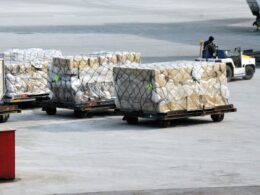When a fleet driver is involved in a collision there are a number of inevitable and obvious costs that will be incurred. Firstly, and probably most tangibly, will be the cost of fixing the vehicle – and leasing another whilst it’s off the road. Then there are third party costs, swiftly followed by the requirement for re-delivery and/or loss of goods as a result of the accident.
But these costs are only the headlines. The total cost of a collision for a fleet includes numerous other costs which aren’t apparent on first view. Loss of productivity, cost of personal injury claims, damaged or destroyed stock, legal expenses, late delivery penalties and more. RoSPA reports that final costs can range from anything between four to 32 times the costs of vehicle repair.
According to the UK Health and Safety Executive, heavy vehicles (buses, coaches and HGVs) are involved in over 14,000 accidents a year. Of these, around 350 are fatal accidents.
Meanwhile, the latest Department for Transport figures show that damage-only accidents cost a total of £4.5 billion per year. For each accident incurring slight injury, the average cost per accident is £23,336, adding up to a total cost of £2.8bn per year. Over £389 million is lost output due to injury. Moving up to serious injury accidents, the average cost per accident is £219,043, adding up to a total cost of £4.5bn per year. Of this, over £526m is lost output. Finally, fatal accidents, a huge burden on the businesses and the state, cost an average of £1.9m per accident. This creates a total cost of £3.1bn per year, £1bn of which is lost output.
Looking at DfT and HSE figures in the context of heavy vehicle fleet operations, it’s clear that robust action is needed to ensure that instances of accidents of any severity are minimised. The human impact is a terrible thing, but in such a competitive market where every penny counts, the cost element must also be a high priority.
Fleets spend a lot of time streamlining operations to minimise fuel costs and collision prevention can become a secondary goal, yet preventing collisions before they occur can have huge impacts on annual fleet running costs. Predictive analytics can help fleets achieve safer day-to-day operation, while in-cab video event recorders can document risky driving behaviour and demonstrate which of a fleet’s drivers requires additional coaching. By assessing drivers in this way, it is possible to apply a preventative approach, rather than counting the cost of a collision and only then applying the necessary coaching.
Looking at the cost of impact pragmatically, fleets can no longer afford to be ambivalent about employing preventative measures.
It’s that simple.
Caroline Russon













